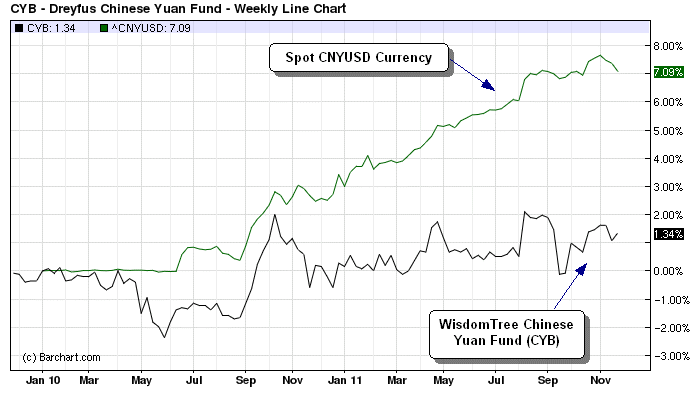Currency ETFs Currency ETNs Currency ETFs List Currency ETFs and World Currency Options
Post on: 10 Апрель, 2015 No Comment

In times of volatility, equity investors prefer to exit the market and stop dealing in stocks altogether. Instead they should invest in other asset classes to reduce the risk in equities.
The Foreign Exchange (Forex) market is the largest and most liquid market in the world. But individual investors did not know the intricacies of this market and so did not participate much in them. The introduction of Currency ETFs nearly five years ago changed all that.
What are Currency ETFs?
They are exchange traded funds (ETFs) which have invested in a currency or a basket of currencies. These investments may be in the form of foreign cash deposits or currency future contracts.
Benefits of Currency ETFs:
Investing in Currency ETFs is the easiest way for individuals to enter the forex market. This is because there is no need to open a forex account since they do not have to buy or sell foreign currency. All they have to do is buy Currency ETFs in the Exchange itself.
Stock markets often go into bear phases. Traders and investors who do not want to play in this highly risky market can opt for the comparatively low risk forex market and what better way to do this than to buy currency ETFs.
Types of Currency ETFs:
There are funds which track individual currencies as well as those which invest in multiple currencies.
Though there is single currency ETFs for many currencies, the most popular ones are the US Dollar and the Euro. The British Pound, the Japanese yen, the Canadian Dollar and currencies of emerging economies like Brazilian Real, Russian Ruble, Chinese Yuan and the Indian Rupee are some other currencies which have ETFs.
Some currencies ETFs are created for certain purposes and they use particular strategies to achieve them. Some of these strategies are:
Momentum Trading Strategy:
Here traders try to ride the momentum of the currency with the help of technical analysis. This strategy is used by short term traders.
Valuation Strategy:
This is followed by long term players who first study fundamental factors to decide which currency would be the best bet. The conditions of the economy and government policies of the country to which the currency belongs influence the decision.
Carry Trade:
Some currency ETFs indulge in carry trade wherein they sell currency with low yields and buy high yield currencies. This kind of trading helps them to cash in on the interest rate differential between the two currencies.
Hedging:
When a business has a lot of imports or exports, currency rate fluctuations pose great risks. Buying currency ETFs will mitigate those risks to a certain extent.
What are Currency ETNs?
Just like currency ETFs, there are currency ETNs (Exchange Traded Notes). These are basically debt instruments whose prices vary with the exchange rate of the underlying currency. This however has an element of risk, as an ETN holder would stand to lose if the ETN issuer turns insolvent.
Some Examples of Currency ETFs:
- The Power Shares DB US Dollar Bullish fund is a currency ETF where you can go long on the US Dollar against a number of currencies like the Euro, the British Pound and the Japanese Yen. Their Bearish Fund allows one to go short on the US Dollar.
- The Barclays Emerging Market Asia Fund is invested in select Asian currencies.
- Individual Investors and traders find it very convenient to buy currency ETFs. They are very beneficial for short term investments and as hedging instruments.














